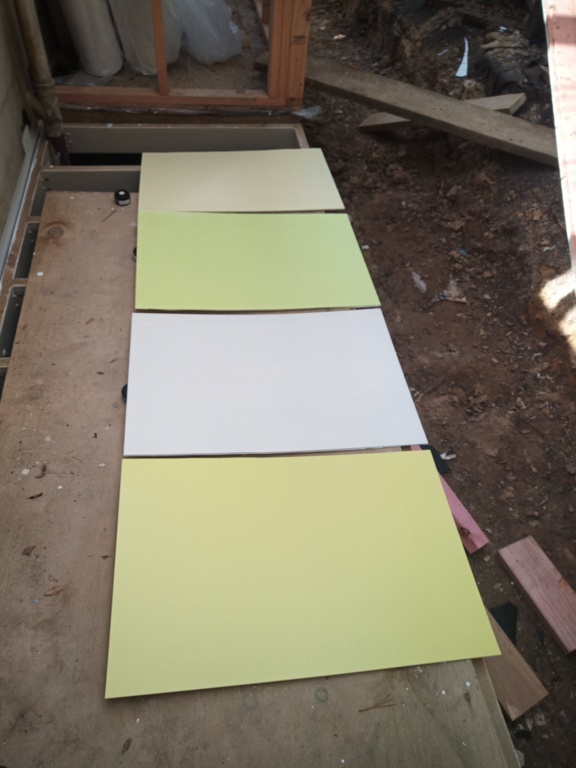
That way you can move it around different walls and see it in different lights.
Oh, and you need to use test pots on a large area, those postage-stamp-sized colour swatch samples aren't at all representative of what a larger area will look like.

That way you can move it around different walls and see it in different lights.
Oh, and you need to use test pots on a large area, those postage-stamp-sized colour swatch samples aren't at all representative of what a larger area will look like.
|
|
does the colour match what it would be like when its on a gib/wood surface?
I agree with filing a reference to what you've used, absolutely essential when, a few years later, you need to touch up some area and can't remember which of the eight million shades of paint it was you used.
Resene actually sells large (A2?) cardboard sheets designed just for this. But I find generic cardboard works fine too. Much better than painting on the walls since:
- you can move it around to different walls
- you don't add a layer of paint to the wall that will stay raised under your eventual top coats (for many walls you won't notice, but anything where the light shines along it like hallways, it will stick out like your choice of proverbs)
- you can keep the card and use it again the next time your painting another room. Different colour? Repaint your colour swatch.
As a protip, leave a blank/neutral border of 20-30mm around the edge. When you have two colours (old wall and new testpot) right next to each other, your mind will see the contrast between the two colours, rather than the colour itself. Resene has a booklet promotional thing demonstrating this - front cover with two holes, one surrounded by grey and the other by orange (?). The colour behind looks quite different, but open it up and it is a single swatch.
Also when doing this, bear in mind that the colours won't be darker when the whole wall/room is painted that colour, but it will be more intense than a colour swatch.
I just used cardboard cut from a Weetbix packet. Worked just fine. Easy to paint, didn't disintegrate, easy to move around from wall-to-wall/room-to-room.
You can also get larger sample swatches than the tiny little ones, but probably need to order them. When we were choosing colours we got A4 size samples.
Eva888: Surprisingly the paper didn’t turn to pulp and became quite stiff with the paint. You learn a lot about effects when swatching and trying the colour out in different light situations and times of day. Also light bulbs used, warm or cool makes a huge difference to the colours.
Just tried it with the cheapest cardboard sheets the local stationery place had, they curled up a bit at the edges but apart from that are fine, just a lot flimsier than Corflute. One thing to note, which became obvious with the first painting attempt using Corflute, is that the impression of the colour on small patches is nothing like what it is from larger areas. All of the colours that looked promising on the colour patches were way too intense when spread over a large area, leading to a second lot with much, much lighter colours. These look closer to the intended effect, although I'd never have picked them off the colour patches.
|
|
